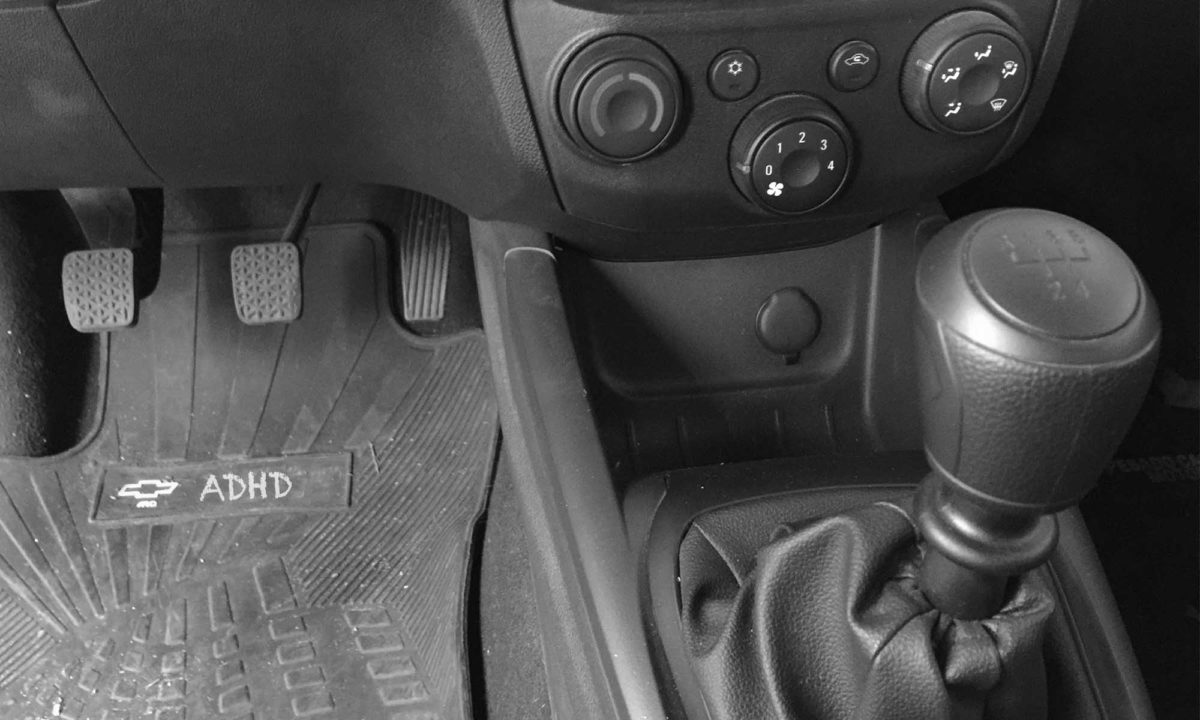Perhaps I should resume this new blog by telling you why I am specializing on ADHD coaching; but, since I left a hint on my previous post and recently someone asked me “What is an ADHD coach”, my brain took another turn.
Thinking about an answer to that question, as I was driving the other day (I drive stick), a metaphor pop up in my head; I’d say I thought something like, “OMG; a neurotypical brain is like an automatic car and a neurodivergent brain is like a manual car; and just like you go to an instructor to learn how to drive, we go to an ADHD coach to guide us on learning about the particularities that are behind driving a “manual brain.”
Then, I did my best to explain it.
Quick Intro
I’ve been driving stick since I learned how to drive, and I love it so much that when I drive a manual car I feel I’m not driving (it’s so easy that is boring!) To do so, as I’ll explain, one must learn how to use three pedals and a stick shift with seven positions, and also how to listen to the engine; the sound of the engine is what tell us what do next.
It’s like becoming one with the car; one must be completely aware that we’re driving… and this, this makes every ride so much enrichening…
Now, bear in mind this: a manual and an automatic car are the same (mostly). A few years ago, I got a brand-new Chevrolet with a payment plan and the dealer asked me, “Will you be taking the automatic or the manual one?” The question was simple because the difference between them were superficial (like, having a button to “roll down the window” or not ); but they both had the same horses, the same motor, Bluetooth! Therefore, the main difference relies on how to drive it.
How to Drive a Manual Car
Attention peeps! This is cool; in a manual car, there are:
- three pedals; from left to right:
- the clutch (which you press with your left foot)
- the brake, and the gas or accelerator (which you press with your right foot)
- and the stick shift has different positions
- reverse and five velocities
- neutral gear

And this is how you drive it:
- Enter the car and make sure the shift stick is on neutral;
- Put the keys on and start the engine; (well, duh)
- Press the clutch pedal and while you’re pressing it move the stick to “1”; release the clutch smoothly as you press the gas to drive for half a block or so; you’ll hear the engine asking you for more; then you:
- Press the clutch pedal again, move the stick to “2” and press the gas to drive for two blocks or so (always listening to the engine) And once again you,
- Press the clutch pedal, move the stick to “3” and – finally – press the gas and start enjoying the ride.
Then if you:
- want to go faster: continue pressing the clutch pedal and switching to “4” and then “5”, always listening to the engine;
- need to stop: press the clutch pedal, move the stick to neutral and press the break.
Bear this in mind: when you are pressing the clutch pedal to move the stick, you must release it very slowly while pressing the gas; you can’t simply lift your left foot because the car will choke. If you think about it, it’s like learning a choreography.
It seems a lot… It is a lot; but once you get used to it, it comes naturally; what’s more difficult to learn is to listen to the engine to see when it needs more gas, and how to carefully transition from the clutch to the gas without choking the car.
An ADHD brain, works exactly like that.
Driving a Manual Brain
A neurotypical brain, which is automatic, is easy to drive; you put the keys on, move the stick shift to D and press the gas to “just start driving.” A neurodivergent brain, on the other hand, is manual… and it needs more of our help.
First, we must decide to get into the car and that is a huge deal; if where we must go is not of our interest, we won’t even bother to find the keys we’ve left “somewhere.”
Then, we must be aware that we are driving and pay attention to the sound of the engine telling us how much power it needs; and of course, to the signs, the other cars and to those people who don’t cross the street from the corner!
When we make a switch, we must do it smoothly and step by step; we cannot go from 1 to 3; we must change our gears step by step: 1, 2, 3, 4, full power!
And, if an old lady wants to cross the street – and we have to release the gas, press the clutch pedal, move the shift stick to neutral and press the stop pedal – by the time grandma gets to the sidewalk, we may have forgotten where we were going to or lose interest in it; hey, we may even go back home thinking, “why did I go out in the first place? Oh… Toilette paper!”
There is a lot more to it; but the fundamentals of driving a manual brain relies on this:
- having interest in going somewhere;
- starting with a pause;
- being aware that we are driving (where to; what’s around us);
- listening to the engine to see what it needs;
- paying attention also to the transition process to switch gears;
- do things one by one, following an order;
- forgive the old lady without having a meltdown.
So, What’s an ADHD Coach?
It’s a neuro instructor! Is a person that will guide us to understand how this manual brain works so we can go to the moon and back because, …, yes, manual brains can also fly; and some of them can do it really fast.
My Jalopy
While driving a manual brain, we may feel that we’re stuck with a jalopy, with that old car our great grandparent got at an auction… and do you know what? In a way, we are; because when we get in, we see it’s full of surprises, treasures we never imagined there could be.
In mine, I found in the trunk a map to a fantasy world where only I can go and where I can fly; under the driver’s seat, there’s a mysterious formula that makes my brain race at the speed of light and it’s hyper-awesome! The ceiling is covered with countless pictures of places, people, and things I long to visit, see and feel… And the wheel! O-M-G; the wheel has a silly smiley face over the horn, so every time I run into something that gets in my way, I smile ☺️
A neurotypical person may wonder, “All of that?” and I’d reply, “Not even close.”
I drove like an F1 driver for twenty years; with purpose, listening to my engine, being aware of everything around me and absorbing the knowledge from every person I’d meet and their new stories… But then, I crashed more times than I’d have expected.
During my mid-twenties, I forgot about the cooling system and it ran out of water; and I kept pressing the gas to keep going – without listening to engine – until I broke my manual brain… Life, traumas and my own bad choices literally choked my brain until it went: “kaboom.”
Maybe if I had known there was also a cooling system I needed to care of, I wouldn’t have failed; but then again, I wouldn’t be here telling you: “Even if you crash your brain into pieces, you can fix it.”
Last but not least, I never lose my keys; I attached them to something big that I cherish, to something that brings me happy thoughts, so they are always at plain sight.
… If you’d ask me, driving automatic is totally overrated.





